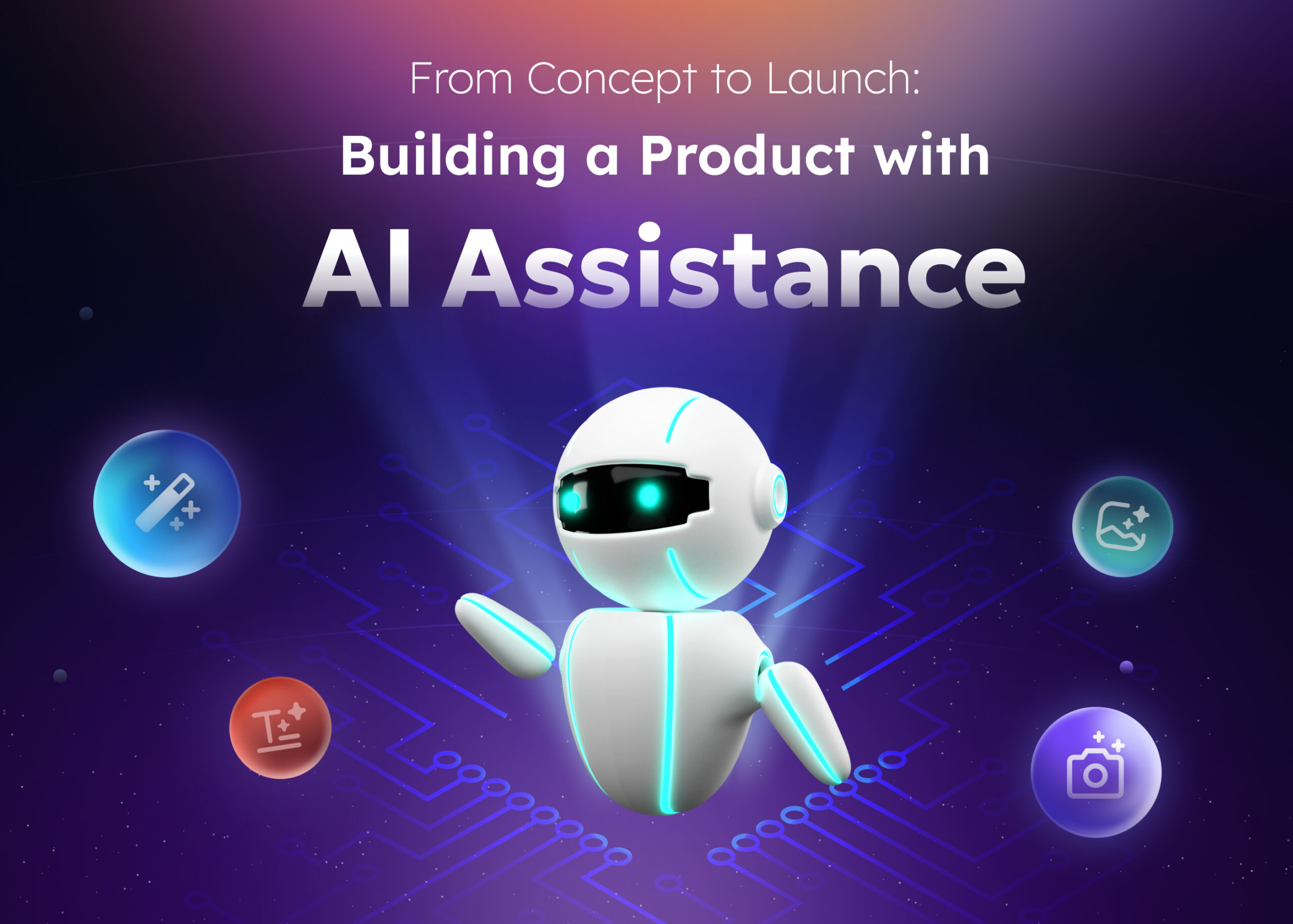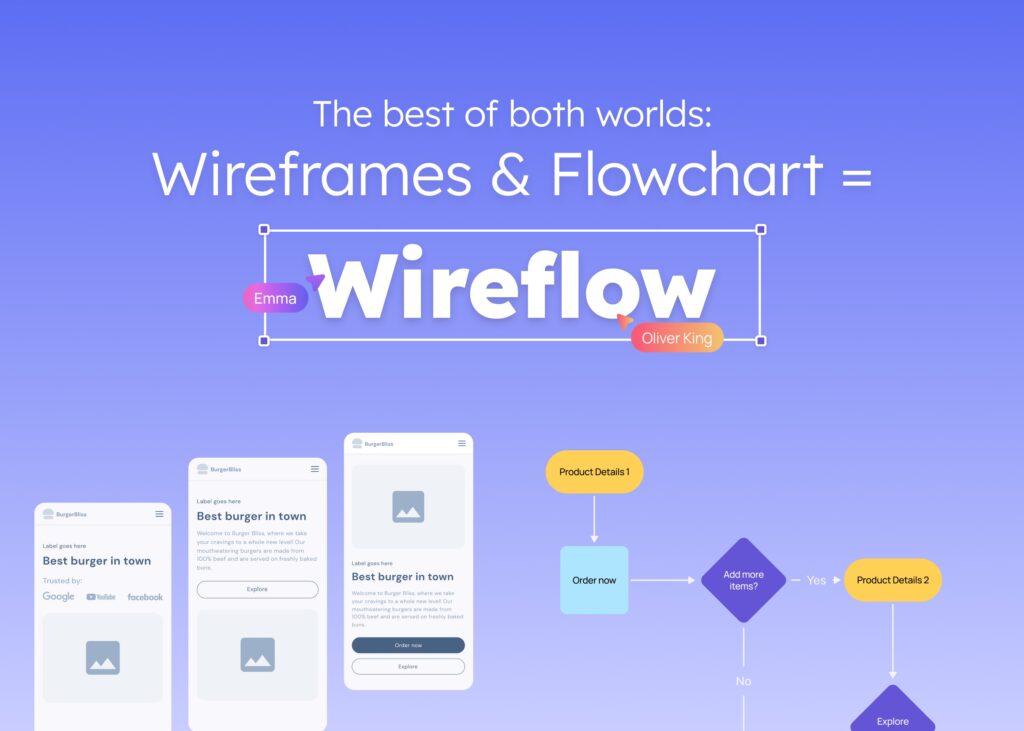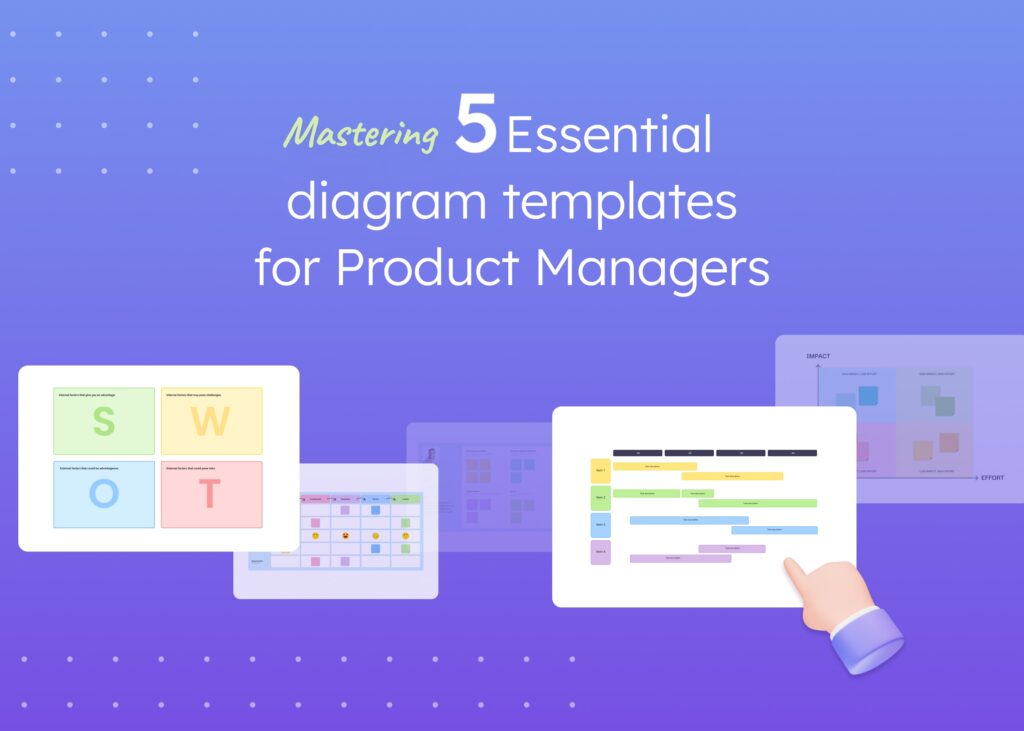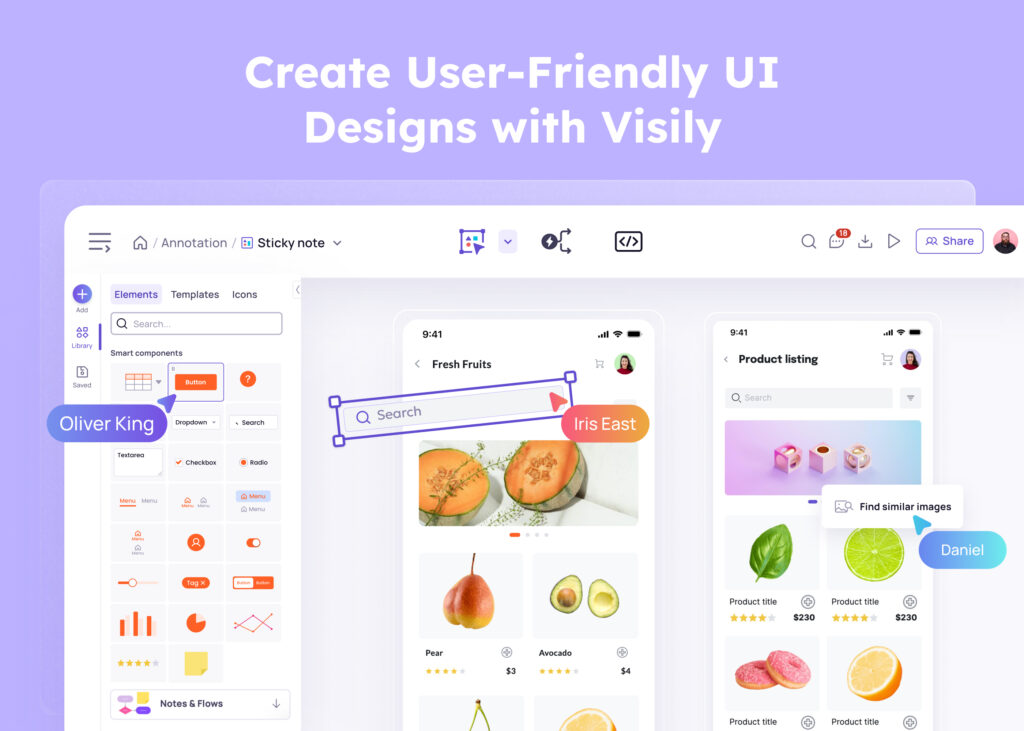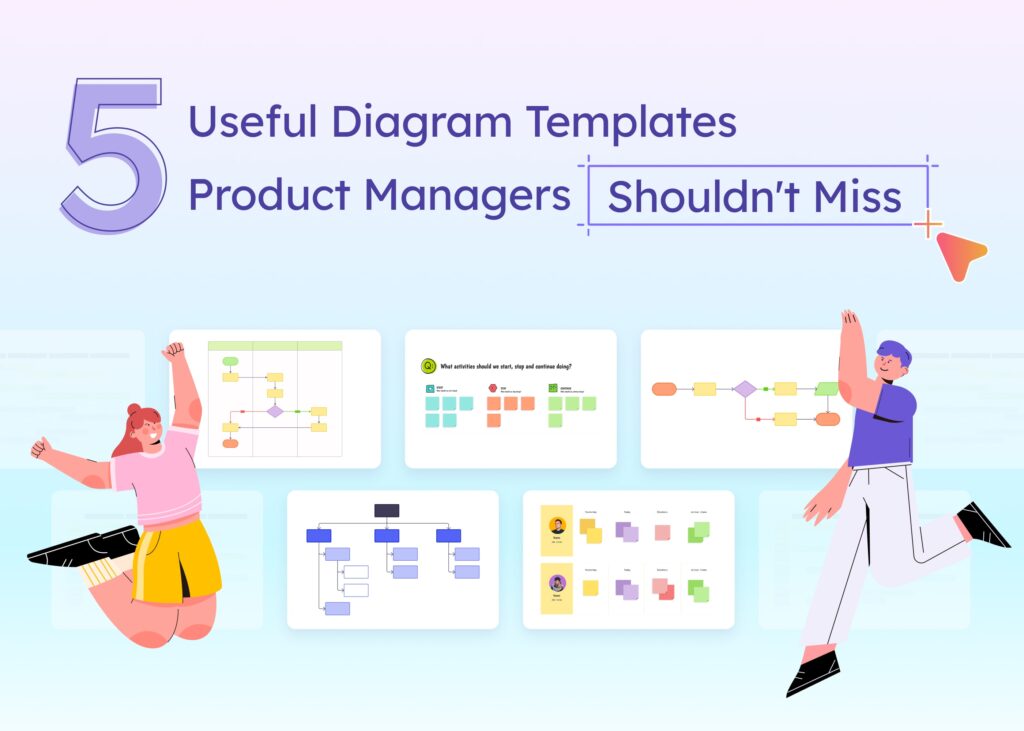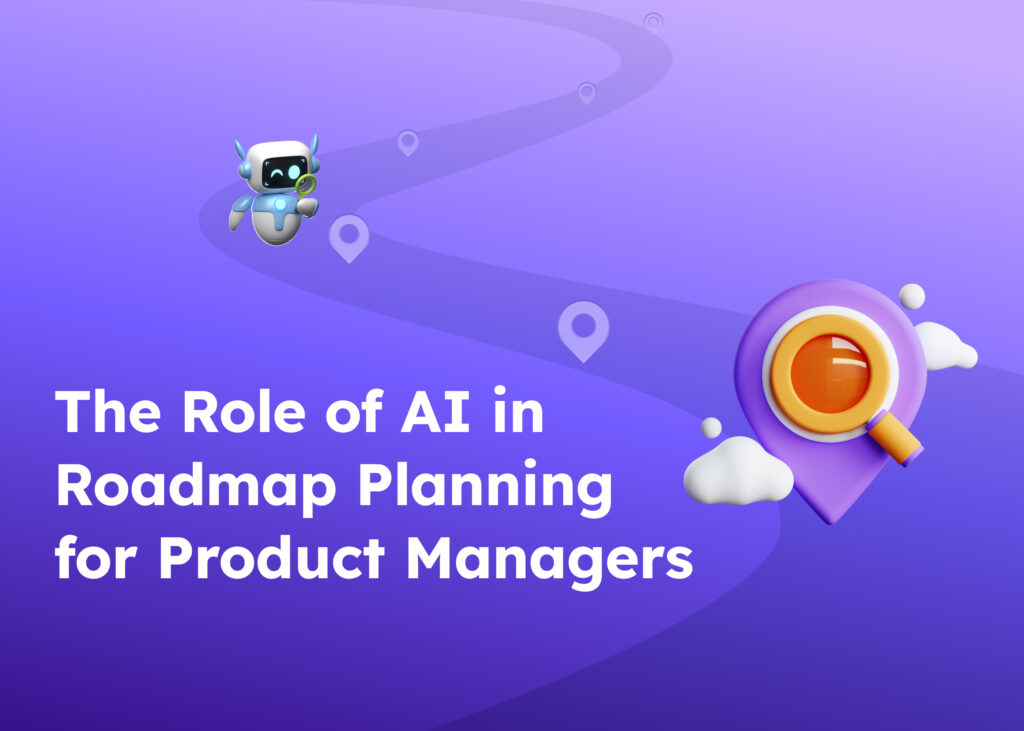The world of modern product development is complex but also crucial. Artificial Intelligence (AI) is a valuable tool in this landscape, transforming innovation, quality, and efficiency.
Nowadays, AI can be used in every step of creating a product. It helps with researching and finding opportunities, developing concepts, and determining final changes. AI not only automates mundane tasks but also works with us to come up with new ideas and improve the process.
In this article, we’ll shed light on how AI is used to bring a product from concept to launch. We will dive deep into the various tools being used at every stage and what this means for product teams.
Table of Contents
Ideation and conceptualization (aka brainstorming)
Using AI has helped companies make more money and work more efficiently. A study by MarketsandMarkets predicts that the AI market will grow from $86.9 billion in 2022 to $407 billion in 2027. But what’s AI’s role in the whole process of building products, and how can they grab a piece of the pie?
Product designers can use AI design tools to generate and refine their ideas, using preset guidelines to inspire new and unbiased concepts. This removes the limitations of personal biases so that they can explore all the potential options.
AI tools can help organize ideas, manage data, and plan personalized user experiences. This saves time for product managers and simplifies decision-making with data. Adding AI to the design thinking process helps teams focus on important tasks instead of repetitive ones.
Traditionally, this phase of product development involved getting teams together in rooms with whiteboards and post-it notes. Thanks to modern design tools (many of which are now AI-powered), you can now accomplish this task entirely online. Doing it online streamlines the whole process, particularly when working with hybrid or international teams.
Market research and analysis
AI tools can automate data analysis, report generation, and data cleansing. This way, you can save time and resources while minimizing the risk of errors (three birds with one stone).
Some of the best AI market research tools include AI Quantilope, Appen, Pecan, Crayon, Hotjar, Perplexity, and Browse AI. These AI tools can identify new market opportunities, emerging trends, and customer behavior insights.
Businesses can use them to predict demand, improve supply chain and inventory management, and analyze competitors’ strategies, products, and prices in real time.
AI can also create granular user segments and recommendations in minutes based on complex navigation, something that might take an analyst hours to do.
Designing and prototyping
The design phase of product development heavily revolves around creating a software architecture that accurately meets the needs of users. It’s a meticulous process that requires a high level of expertise and precision, which means it usually takes a lot of time to do right.
Integrating AI in product design has transformed this process, enhancing efficiency and accuracy.
AI-powered design tools or Artificial Intelligence Design Assistants (AIDA) like Visily can create designs in seconds. Using simple text prompts, screenshots, or sketches, you can go from blank canvas to full-blown design in seconds. Editing these designs is super easy since you can (again) use AI features within AIDA to help you find relevant images, fill in structured data, or change the theme.
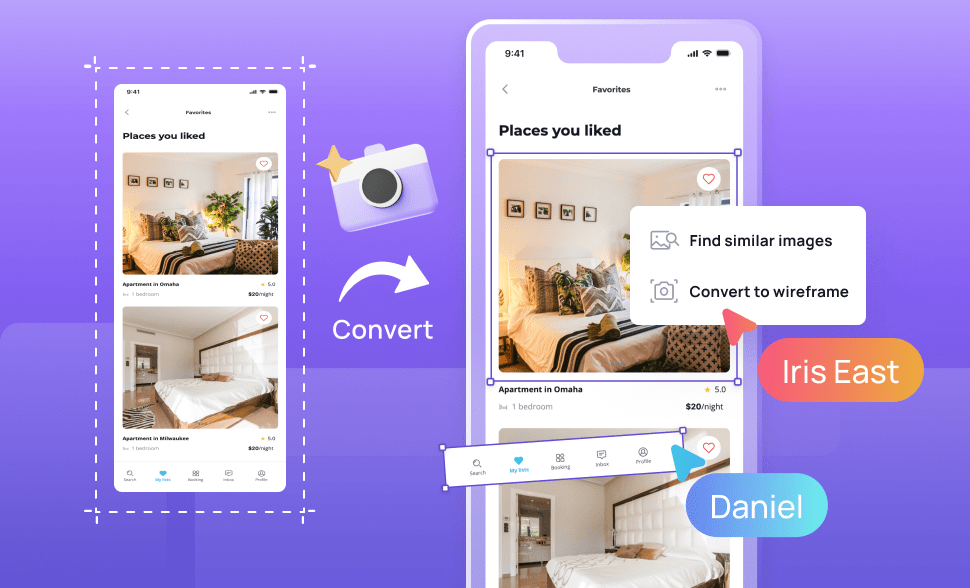
What this also means is that by using tools like Visily, you can effortlessly iterate on a new design until you find what you require. The best part is that you don’t need to spend hours trying to do it from scratch.
The speed isn’t only convenient, but it could also be critical for SMBs and newly established companies that can’t afford to invest time and resources into product features that won’t bring significant profits.
Another key aspect of this phase is that you can then easily use any design from the AIDA and turn them into prototypes. This helps product teams to test the design, gather feedback, and apply changes. Through the use of AI in UX design, companies can enhance their testing precision, improve product accessibility and efficiency, and provide tailor-made experiences.
Development and testing
AI tools can make coding easier and faster. They can scan code for common issues like null pointer exceptions, SQL injections, memory leaks, and other vulnerabilities. Some tools like DeepCode, CodeGuru, and CodeScene even suggest solutions and can identify complex semantic bugs that humans may miss through manual reviews.
Some key ways AI powers code generation:
- Code autocompletion — As developers start typing, the AI model suggests the most likely terms, methods, or syntax to complete the code. This saves developers time and reduces typos.
- Intelligent code snippets — Developers can prompt the AI to generate entire code blocks for common tasks, like connecting to a database or processing user input. The AI generates syntactically correct, readable code instantly.
- Contextual recommendations — The AI analyzes existing code context to recommend the most relevant code snippets and autocompletion terms for that specific situation.
- Translation to other languages — AI models can translate code from one programming language to another, automating time-consuming manual translation.
- Code refactoring — AI can restructure and optimize existing code to improve its design, performance, and quality. This frees up developer time.
- Error correction — AI models can detect bugs and errors in code and suggest fixes. This helps developers debug faster.
Another way to use AI in this phase is by using chatbots, voice assistants, or smart notifications to communicate and coordinate with team members and stakeholders.
In addition to creating a product, AI has the potential to bring innovation to the teams involved in its development.
Until now, coding roles were focused on training people for a specific product that required a high degree of specialization. These experts need to know everything about the software and how each part works.
In the coming years, we’ll use AI to facilitate the onboarding process for new team members, potentially eliminating the need for software experts to conduct training sessions.
If you have a junior programmer with limited experience, use AI code generation tools to help them follow your company’s coding discipline.
Before you test your product with consumers, you can use AI to help you test it. AI can help you detect critical design flaws earlier, which can save you time, money, and frustration.
Launch and marketing
With the use of AI for controlled deployment, businesses can save time and money by carrying out better tests before releasing them.
AI helps developers prevent on-site failures by giving them warnings before they happen. These warnings can be for things like misconfigurations and code errors.
One of the most powerful applications of AI for product launches is optimizing messaging through A/B testing. Rather than guessing which taglines, descriptions, or calls-to-action will resonate best with target audiences, AI tools can test out variations and determine the highest-performing options.
AI-powered platforms like Persado and Phrasee use natural language generation to create hundreds or even thousands of iterations of marketing copy and subject lines. These can then be A/B tested by sending different versions to segments of a marketing email list or showing alternate versions of ad copy to subsets of website visitors.
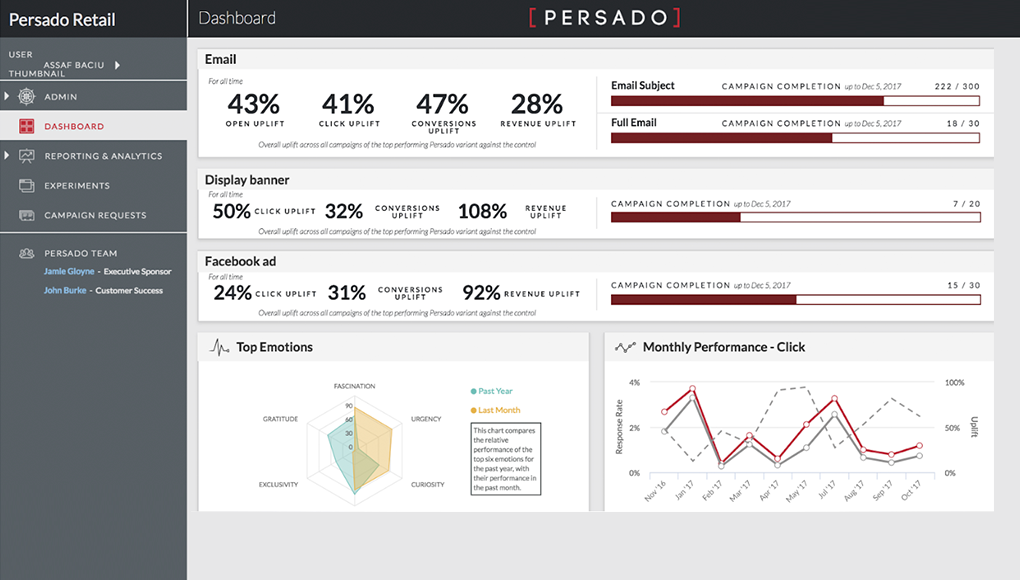
The AI collects data on response rates, engagement metrics, and conversions for each variation. Over time, the algorithms learn which phrases and messaging styles generate the most clicks, shares, sign-ups, purchases, or whatever the desired action is. The AI gets smarter with each iteration about what resonates best with a brand’s customers.
AI has also opened up new possibilities for creating customized, dynamic content tailored to each user. Rather than using a one-size-fits-all approach, AI tools can generate targeted content for each specific user.
For example, AI algorithms can create personalized product recommendations by assessing which items a user has viewed or purchased before. Or AI can customize the imagery, messaging, offers, and product suggestions within marketing emails based on clues about each subscriber’s interests.
Even website content can be tailored dynamically, thanks to AI. When a user lands on a page, AI can instantly generate unique text, images, videos, and layouts designed to resonate more with that particular visitor compared to a generic experience.
Post-launch analysis and iteration
One way AI can help with post-launch product iteration is by giving recommendations on existing features based on user feedback and usage data. For example, if data shows that users are not completing a certain workflow, AI can pinpoint where they are dropping off.
Usage metrics uncover opportunities to streamline workflows and optimize features for better UX. AI can detect patterns and model feature usage through data mining. Product developers can use concrete intelligence from UI to improve features based on user needs.
The combination of usage analytics and qualitative feedback, processed by AI, empowers teams to improve their product features after launch quickly.
The result is products that continuously get better tailored to real user behavioral patterns, not just theoretical assumptions during initial design.
Use AI to speed up and improve your product builds
We believe that AI can change how products are made. It can make the process faster and more accurate. It can also help people come up with new ideas and understand what users need.
We can use AI in a careful and responsible way to make new and useful products for our clients and customers. This will help us work faster and save money.
Ready to try out Visily to help you ideate, design, and build effective prototypes?
Sign up for your free (forever) account.
